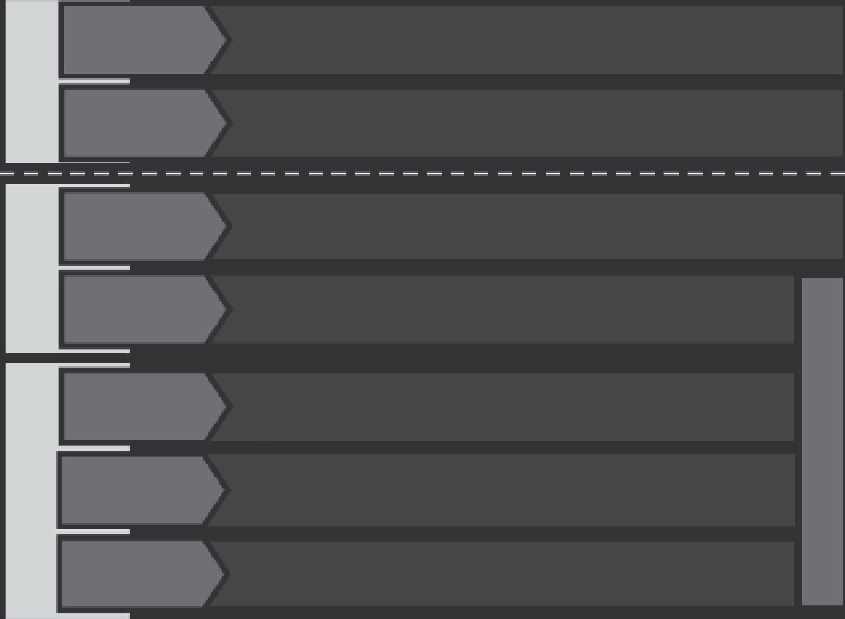Database Reference
In-Depth Information
The client in a SAP system is a concept for the comprehensive logical separation of various work
areas within the system. Technically speaking, a client is the first key field of every application
database table. When a user logs into a SAP system, he or she always enters a client number
(000-999). For this, the user has to be defined in that particular client. After a successful log-in,
the user only has access to the data and processes present in that client. Data of other clients are
not accessible (they can be neither displayed nor edited). This enables separately operating orga-
nizations to work parallel to one another in their own client areas within a single SAP system
without influencing one another (but a maximum of 150 clients per system is recommended for
performance reasons). Via integration processes, data transfer can also take place between clients.
Thus, the client is a strict, organizational separating criterion for users working independently on
a SAP system. Figure 7.4 displays the organizational layers of a SAP system.
For users working in separate organizations within the same company, further organizational
layers are available that are developed in the applications:
1.
Separate systems for corporate subsidiaries and/or regions
: Such a case is characterized by
complete logical and technical system separation, uniform usage, data integration via SAP
NetWeaver PI, and common or separate technical financial processing.
2.
Separate system-internal clients for corporate subsidiaries and/or regions
: This case is charac-
terized by complete logical separation with common usage of technical system resources,
Separate system for divisions and/or regions
System
Complete logical and technical separation, uniform usage, data integration via SAP PI, joint
or separate financial processing.
Separate system-internal client for divisions and/or regions
Client
Complete logical separation, with common utilization of technical resources, uniform usage,
data integration via SAP PI, joint or separate financial processing.
Internal company code in SAP ERP for divisions and/or regions
Company code
Complete technical financial separation with common utilization of technical and logical
resources, uniform usage, joint or separate financial processing.
Sales organizations for divisions and /or regions
Sales
organization
Complete sales-based separation with common utilization of technical system
resources, uniform usage and data integration, joint or separate financial processing.
Subdivision of sales organizations
Sales office
Sales group
The sales office is the organizational unit of S&D responsible for distribution within a
geographical area. The sales group executes the sales procedure and is internally
responsible.
Organizational definition of customer relationship
Distribution
channel
The distribution channel designates the path upon which marketable services reach
customers. Typical examples of distribution channels include direct sales or key
account sales.
Organizational definition of product responsibility
Division
Organizational unit of distribution that, with regard to sales or profit responsibility, is
composed of marketable services.
Figure 7.4
organizational Layers of a SAP system.

